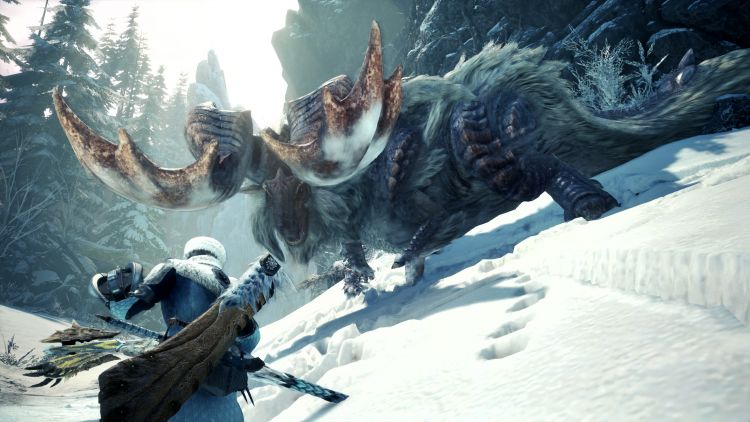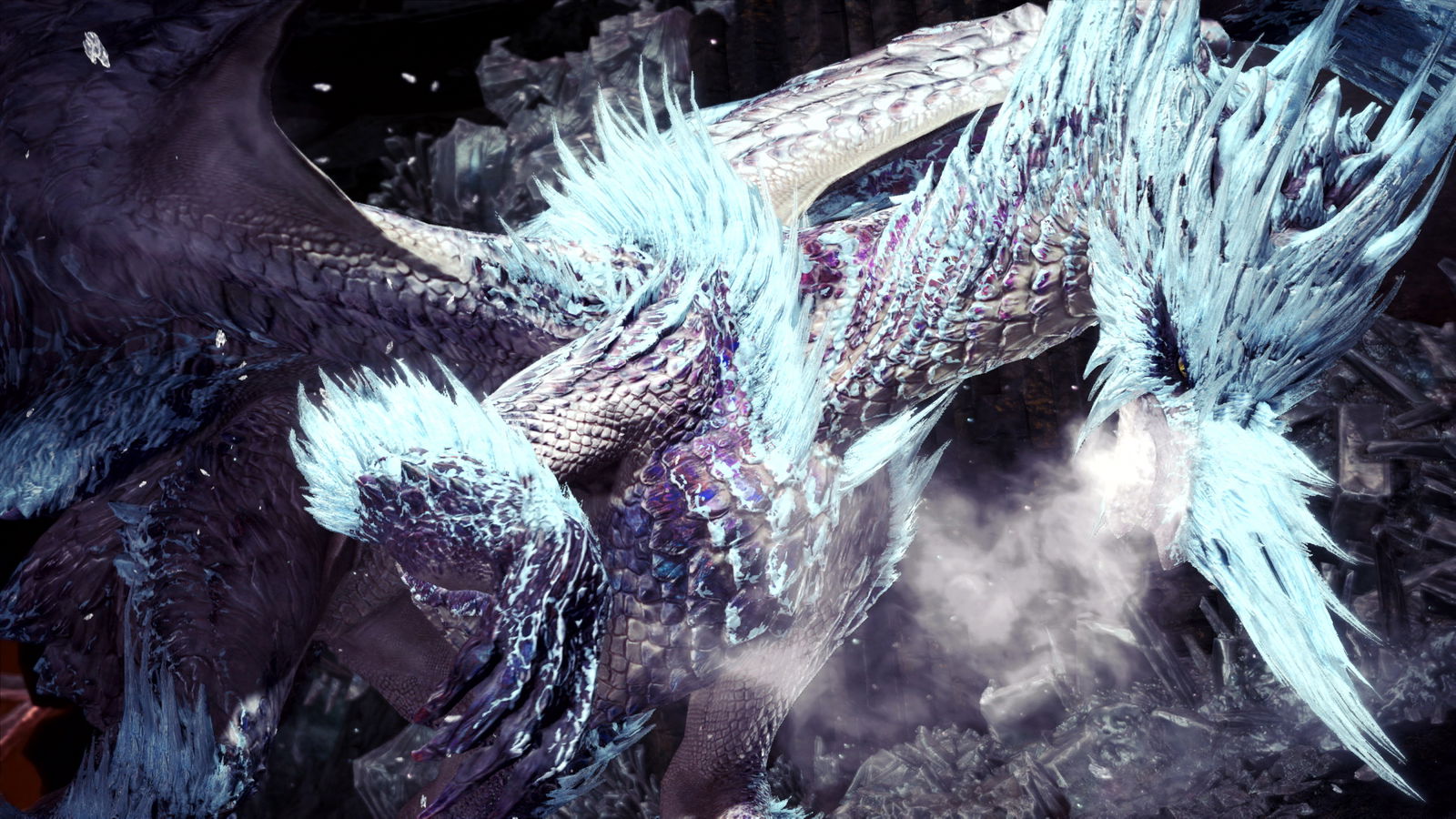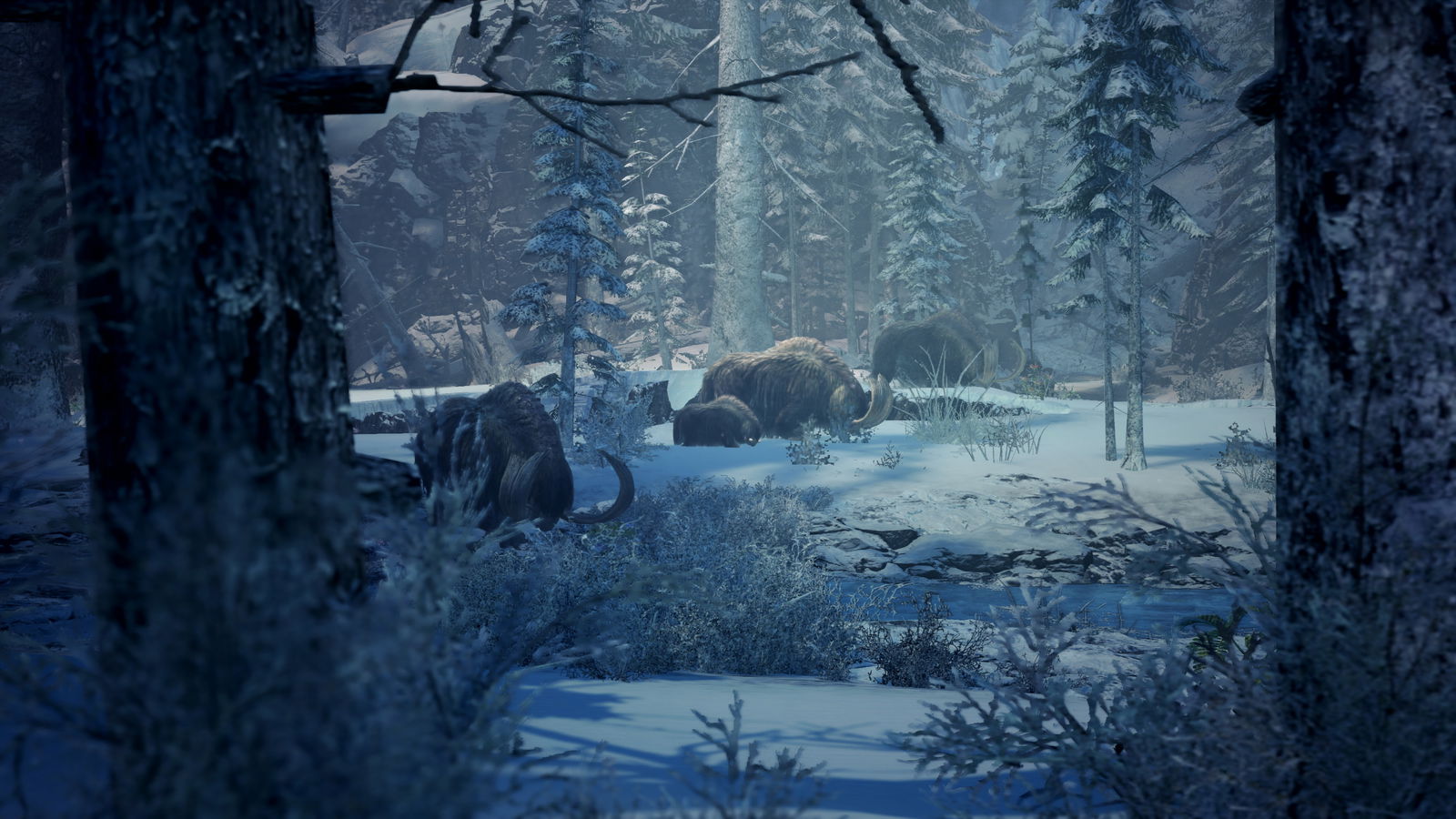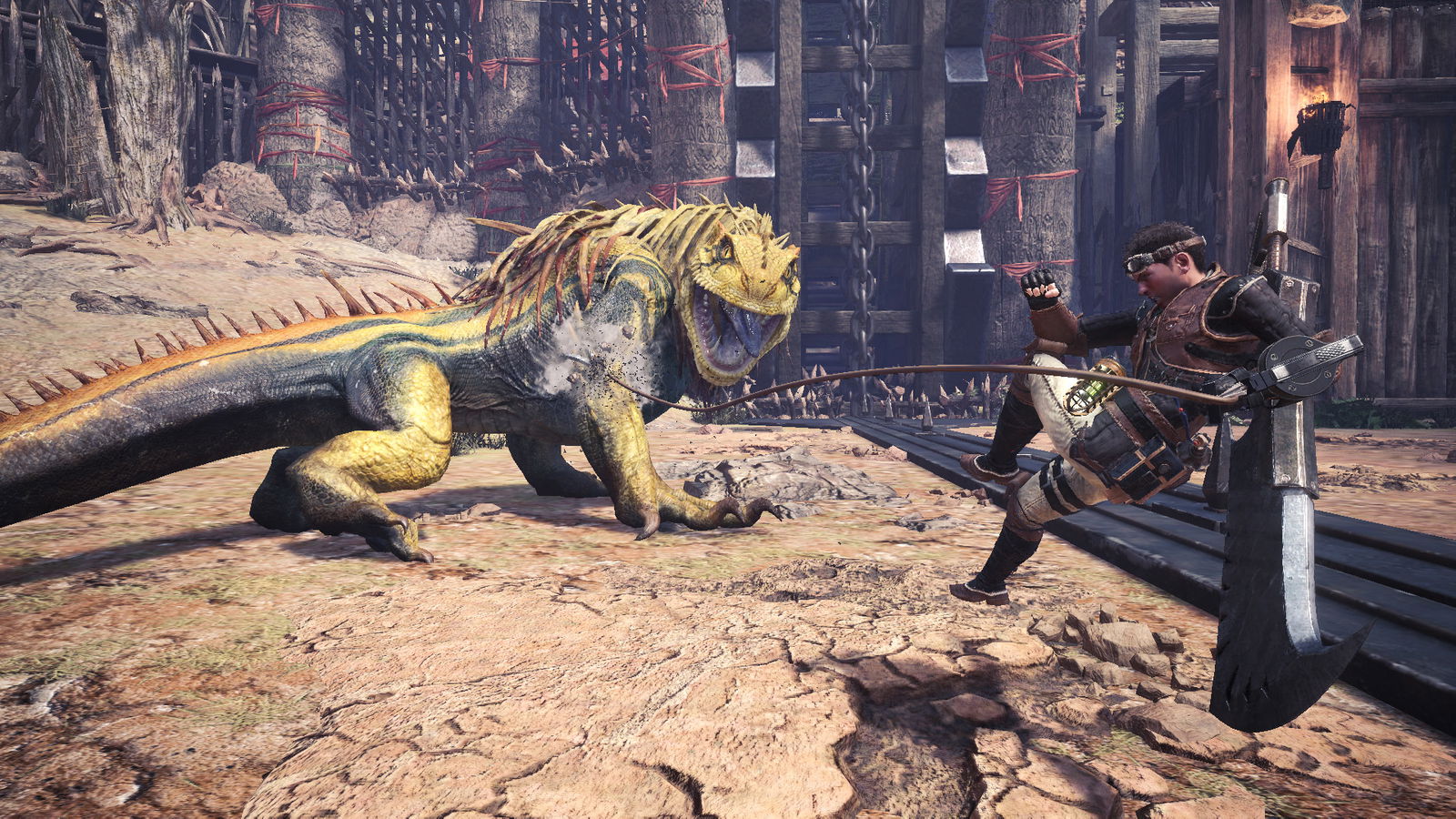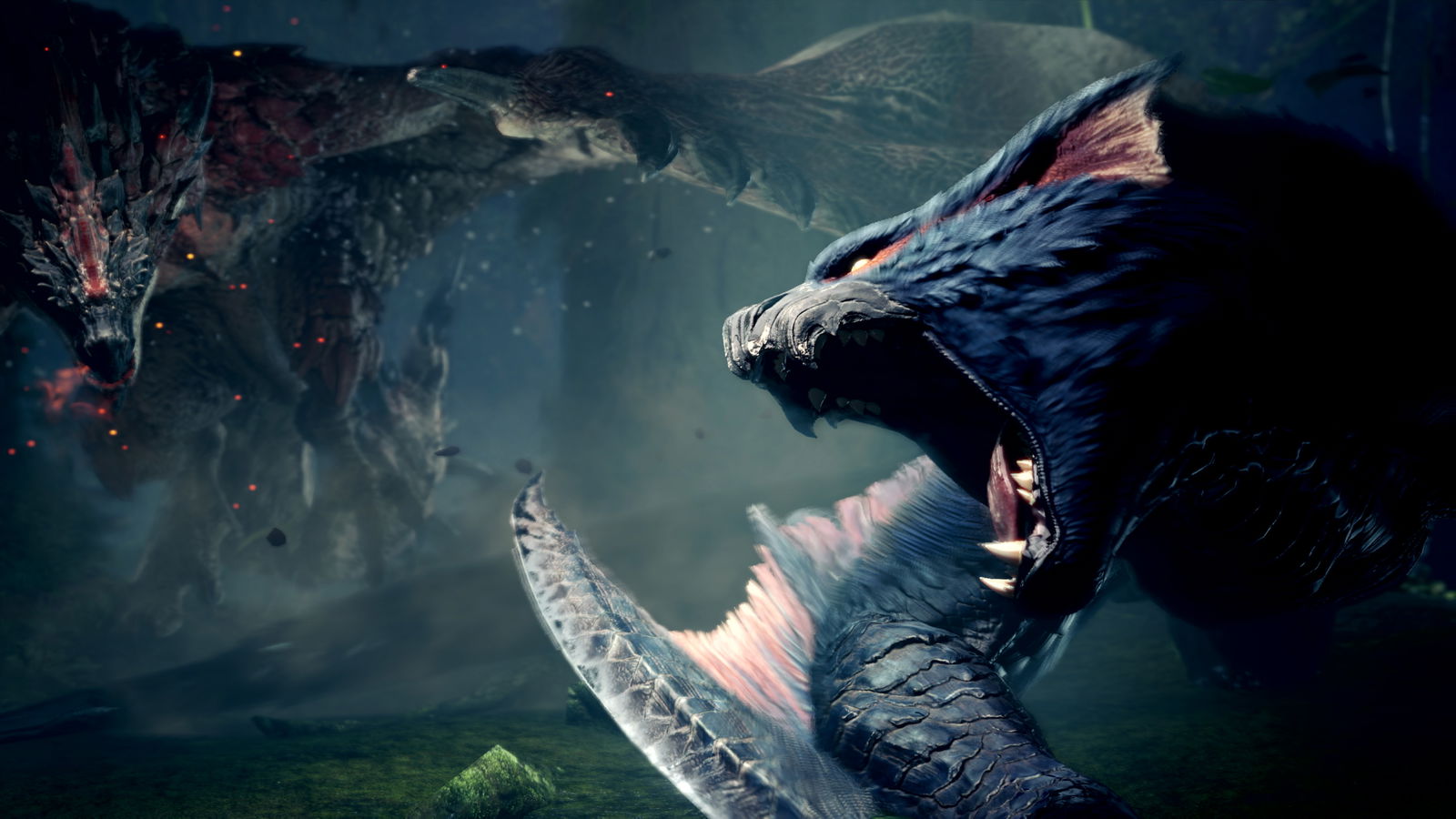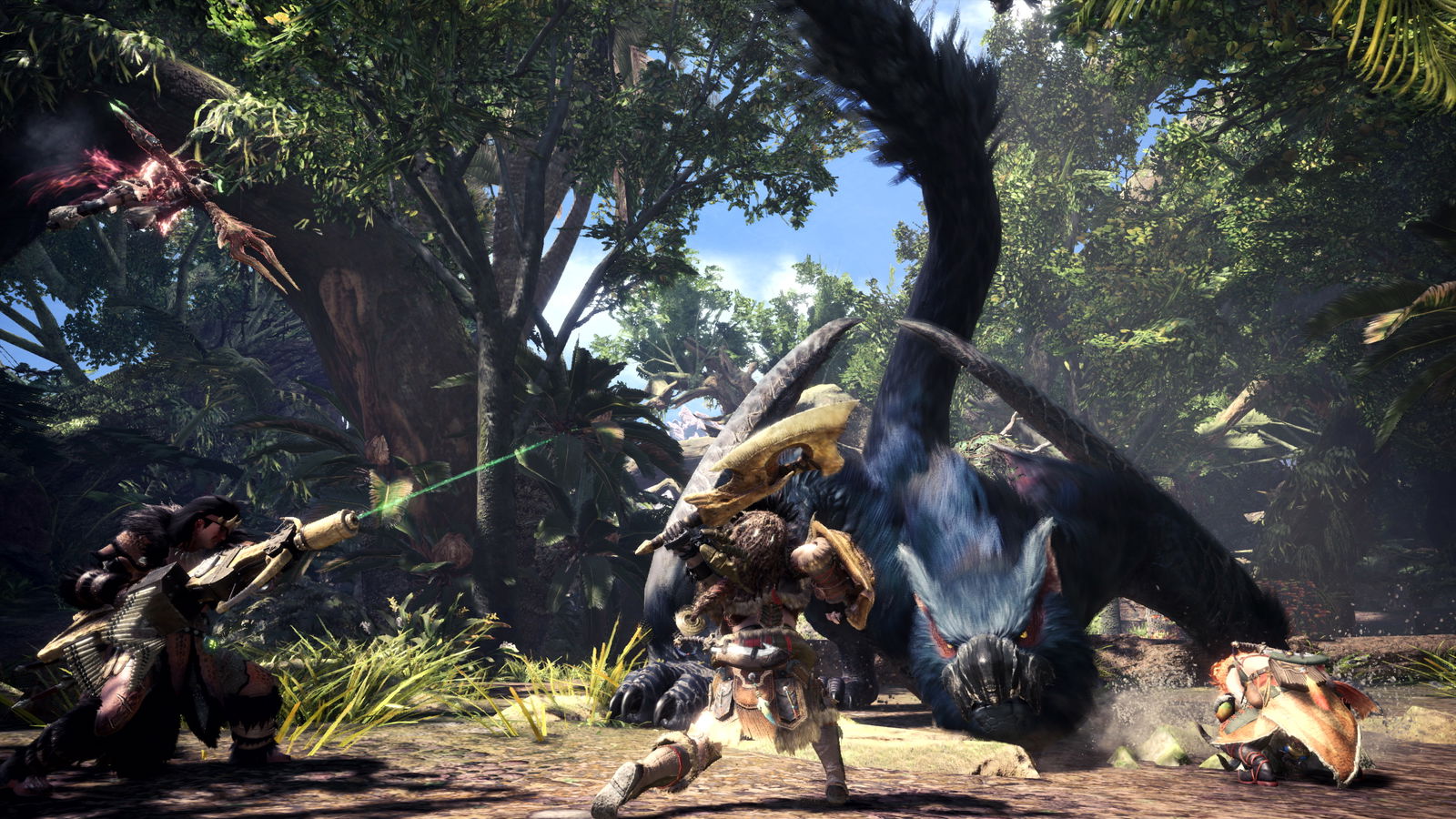When Monster Hunter World was initially released early last year, I was floored by the improvements Capcom had made to one of my favorite franchises. What was once trapped on handheld devices and confined to numbered areas separated by loading screens was now a game with AAA production values, one with living, breathing ecosystems filled with creatures that would interact in interesting and believable ways. As I spent hours upon hours grinding away in the base game, I repeatedly thought to myself, “it can’t get much better than this.” I was wrong.
Game Name: Monster Hunter World: Iceborne
Platform(s): Playstation 4 (Reviewed), Xbox One, PC
Publisher(s): Capcom
Developer(s): Capcom
Release Date: September 6, 2019 (PS4/Xbox One), January 2020 (PC)
Price: $39.99 (Standard), $59.99 (Master)
Iceborne picks up right where World left off. After sorting through all that Elder Dragon nonsense in the main campaign, the Research Commission isn’t given much time to rest. A mass migration of Legiana leads the gang to an undiscovered continent caked in snow, and it’s here they’ll unravel the mysteries behind the changes in the ecosystem all the while dealing with an icy Elder Dragon called Velkhana. It’s an interesting premise that doesn’t end up developing in any interesting ways, but of course, this is Monster Hunter. We’re here to hunt monsters.
And boy oh boy are there some monsters in Iceborne. There are over two dozen large monsters, some of which you won’t even see until well after the credits roll. Calling Iceborne a “massive expansion” is practically an understatement. Alongside the new lineup of foes is a plethora of tweaks and reworks of existing monsters to make them suitable for Master Rank, Iceborne‘s new difficulty level. There’s so much to do and so many things that shake up the formula, and it’s safe to say this expansion could keep you busy for well over a hundred hours (not that that’s anything new for Monster Hunter games).
Despite being called Iceborne and having the entirety of its marketing material covered in ice and other wintery imagery, this expansion does not have you fighting ice-based monsters in the snow for forty hours. In actuality, a good chunk of Iceborne is spent on the game’s main continent in areas you’ve already spent tons of time in, albeit with powerful new monsters roaming the lands. There is a surprising amount of variety in the roster, and this is not an expansion where you can just throw on some ice resistance and pick up a fire weapon and be done with it.
Still, a decent portion of Iceborne is spent in the Hoarfrost Reach, the game’s huge new snowy region. It starts small, but as it opens up throughout the story, it becomes one of the largest hunting grounds in Monster Hunter World. Not only is it large, but also densely packed with traps and environmental hazards that will prove just as much of a danger to you as they do to the monsters you’re hunting. Some areas will have the icy floor collapse under your feet, while others will have bursts of air that send you flying upward. Because Iceborne takes place after World‘s campaign, the developers knew you’d be pretty experienced, so they didn’t have to hold back when creating this area. It’s as gorgeous as it is dangerous, too. When I first heard about Iceborne, I was worried the expansion’s visuals would blend together in a boring mix of whites. The Hoarfrost Reach is breathtaking, and every part of it, from the deep snow to the hot springs to the underground caves, is masterfully designed by a very talented team.
Seliana, the expansion’s new hub, is located just outside of the Hoarfrost Reach, and it all but replaces the base game’s hub of Astera. Astera, while charming in its own right, completely pales in comparison to Seliana, both practically and aesthetically. The problem with Astera is that everything is so spread out. The canteen, smithy, and just about every other important service were so far from each other, some even on different floors. Thankfully, Seliana is flat. Everything is right where you’d expect it to be, and it’s compact enough to make getting around less of a chore. It’s also a really cozy place with some relaxing background music. The only times I returned to Astera during my time with Iceborne were when the story demanded it, and I don’t see myself choosing Astera over Seliana anymore now that I’ve reached the endgame. Seliana also has a gathering hub that isn’t completely useless like the one in Astera! Seliana’s gathering hub has everything you’ll ever need, even access to the smithy! This gives Iceborne the potential to be a much more involved social experience than World, and actually being able to see your friends when you return from a tough hunt is way more fun than coming back to a solo hub.
Speaking of improvements to the base game, Iceborne adds a ton of new features and tweaks to the core mechanics of World that you can make use of way before starting Iceborne content. Raider Ride allows you to mount small monsters in a given area. They’ll sniff out footprints and tracks to help you reach your prey, and you can sharpen your weapon and consume items while they taxi you to your target automatically. You can now fire your slinger with your weapon drawn and a few weapons have even had slinger functionality added to some of their combos, making the slinger a much more viable tool in combat (even though it was already super helpful).
The clutch claw is another addition to the slinger, allowing you to grapple onto a monster and damage their hide to make a certain body part more susceptible to breaking or even unload your slinger into a monster’s face causing them to ram headfirst into a wall for a free knockdown. The clutch claw changes the way you play Monster Hunter World, and your party can absolutely bully monsters using the thing. Several hunters weakening the parts you all are trying to break while coordinating knockdowns using slinger bursts to the face can allow for massive damage in short periods, adding even more depth to an already deep combat system. Every weapon type has a few new moves and combos too, which is a nice touch. Insect Glaive users, for example, can charge up their Kinsect using slinger ammo and perform some new actions while airborne. Iceborne‘s gameplay changes bring even more flexibility and strategy to an already excellent combat system, and they raise the skill ceiling even higher than it already was.
You’ll need to make use of these new strategies to succeed in Master Rank, which is the new difficulty that Iceborne‘s content is set at. Like the transition from Low Rank to High Rank, the transition from High Rank to Master Rank gives monsters new abilities, enhanced mobility, and a newfound sense of aggression. During my first Master Rank Great Jagras encounter, I was on autopilot because that monster stops being a threat the second you learn to play Monster Hunter World. I was taken aback when it spit at me using a projectile attack I had never seen before.
It’s changes like these that will keep you on your toes even with monsters you’re deeply familiar with. To keep up with Master Rank monsters’ larger health pools and increased damage outputs, you’ll need to procure new Master Rank armor and weapons. Even basic Master Rank armor sets dwarf endgame High-Rank gear, and I was very quick to swap out my kitted-out High-Rank Nergigante set for even the simplest Master Rank protection. Weapon rarities have been increased from a maximum of eight all the way to twelve, and armor sets require brand-new Master Rank materials to craft. The gear grind is alive and well in Iceborne, and I loved every second of it. It allowed me to experience World‘s excellent progression a second time, only this time the stuff I was working toward was way cooler than before.
Another aspect of Monster Hunter World: Iceborne I enjoyed was being introduced to new monsters. Seeing those awesome introduction cutscenes and then having to learn how to deal with each monster never got old, even if some of Iceborne‘s new beasts fall a little flat. Each entirely original monster is fantastic, but the Iceborne story will make you fight subspecies of monsters from the base game quite often. Some of these, like Viper Tobi-Kadachi, are different enough to feel unique in their own right, but others, like Shrieking Legiana, feel so similar to their base game counterparts that the fights weren’t as exciting. Don’t get me wrong, the subspecies are all still cool, but I wish there were more original monsters or returning fan favorites. Getting to see Monster Hunter staples like Glavenus and Tigrex fully realized in World‘s engine more than made up for this small setback, though. There are some really cool fights in Iceborne, and I don’t want to spoil too much, so I’ll just leave it at that.
One part of the base game that I felt was lacking was the endgame. Sure, there were things to grind for, but nothing felt particularly worth all the effort. Iceborne adds an endgame gameplay loop so brilliant and so engaging that I wish I was playing it at this very moment. It’s also something I don’t want to spoil because the surprise of finding out what it entails is a pretty neat moment. If you’re comfortable with endgame gameplay spoilers, read on ahead, but if you’d rather stay in the dark and find out for yourself, maybe skip the next two paragraphs.
*LIGHT SPOILERS FOR ICEBORNE’S ENDGAME FOLLOW*
So it turns out that the Hoarfrost Reach isn’t the only new area added to the game with Iceborne. After completing the main story, you’ll gain access to the Guiding Lands, which is a mishmash of the four main areas in the World base game, all blended into one massive region. That means practically every monster in the game can be present and interact with one another in the Guiding Lands (save for those exclusive to the Hoarfrost Reach and Elder’s Recess). Each area seamlessly connects to the others, and it’s cool to walk from the Ancient Forest area straight into the Coral Highlands. Of course, it’s not the full version of each area, just a small part of the map themed around that region, but the entirety of the Guiding Lands is big. You don’t take on any specific quests here, but rather go out on an expedition and hunt to your heart’s content.
As you hunt, you’ll level up each area to a maximum of four (the cap can be raised a few times by leveling up your Master Rank). As each area’s level increases, more powerful monsters will appear, starting with lowly Great Jagras and Tobi-Kadachi but eventually ending up with Elder Dragons. As you level up one area, though, the other areas’ levels will decrease, so you’ll have to focus on whatever area would have whatever specific monster you’re looking for.
You can also come across “signs of a turf war” which will give you an investigation objective that you can fulfill by hunting monsters. Completing this objective will give you a one-time use item to summon a specific monster (the tutorial lets you fight Zinogre), which is great if you’re grinding for certain parts. Monsters in the Guiding Lands drop materials you can’t get anywhere else, and on top of that, the Guiding Lands are home to six brand-new monsters that you can’t see until you progress in the post-game enough. The Guiding Lands are fun and rewarding, and you can stay as long as you like, making them perfect for long grinding sessions with friends.
*SPOILERS DONE*
With the materials you acquire in Iceborne, you’ll be able to have more control over your gear and overall build than ever. New level four decorations house two abilities instead of just one, allowing for more flexible customization. Some materials you acquire in the endgame allow you to customize some cosmetic aspects of your weapon, although not to a super in-depth degree. Layered armor sets are craftable now, but there aren’t enough to make that a worthwhile feature. Because Master Rank gear is so powerful and has so many unique abilities and decoration slots, you’re able to have nearly complete control over your build, even more so if you’re willing to grind through the revised endgame augmentation system. You can get some truly insane damage outputs from some armor sets, and it makes the progression all the more rewarding thanks to the crazy things you can end up pulling off.
To get to all the fun stuff, however, you’ll have to power through Iceborne‘s roughly 30-hour story. If you’ve played the World story, you’ll already know what to expect. It’s not bad, but Iceborne focuses heavily on characters that aren’t fleshed out instead of the truly fascinating monsters and ecosystem, which can make some scenes not hit as hard as intended. The story itself is inconsequential yet serviceable, but certain story objectives, unfortunately, bog down the game’s pacing. Like in World, there are some segments where you’ll have to fill an investigation bar up by finding “???” tracks during optional quests and expeditions. Sometimes, these are over quickly and you’ll find the majority of tracks in one outing, but sometimes it can take just a bit too long and detract from the experience. Other times you’ll fight bland subspecies back to back, which can put a damper on things when you’re excited to see the next big new monster but you have to fight a Paolumu first. Still just a minor gripe, but it’s a problem that should have been fixed after the release of World (much like the multiplayer system which still won’t let you play with friends unless you view a cutscene first).
Despite some very minor issues, Monster Hunter World: Iceborne is an excellent expansion to a fantastic game. The ways it improves upon the base game are welcome changes, and the humongous amount of brand-new content cannot be overstated. Although the weak plot can get in the way of the good stuff sometimes and the game can rely a little too heavily on subspecies rather than new monsters, Iceborne is incredible.
The base game of Monster Hunter World was already loved by so many, myself included, but with Iceborne adding and improving upon so many things, it’s safe to say that Monster Hunter World is a without a doubt one of the best games of this generation, and it’s one you should definitely be playing. With many more monsters and title updates on the way, Iceborne is just the beginning in a wonderful new chapter for Monster Hunter World, and I’m glad to be a part of it.
Affiliate Link Disclosure: One or more of the links above contain affiliate links, which means at no additional cost to you, we may receive a commission should you click through and purchase the item.
Summary
Iceborne is an absolutely massive expansion to one of the greatest action-RPGs released in recent memory. Not only does it add a sizable campaign, a huge new locale, and over two dozen new beasts to take down, but it also refines and adds upon the base game’s content in ways that make it hard to go back to the vanilla version. Master rank brings much-needed challenge and variety to World, and the new endgame gameplay loop is brilliant. Although the story is paper-thin and subspecies of existing monsters take the spotlight a little too often, Iceborne breathes new life into Monster Hunter World and makes me want to sink many more hours into a game I’ve already spent hundreds with.
Pros
- Tons of interesting new monsters
- Vast, beautiful new area
- Engaging and addicting endgame
- Clutch claw, raider ride, and other quality of life improvements
- In-depth customization and build control
- Actually useful gathering hub and town
Cons
- Weak story and pacing issues
- Over-reliance on subspecies


